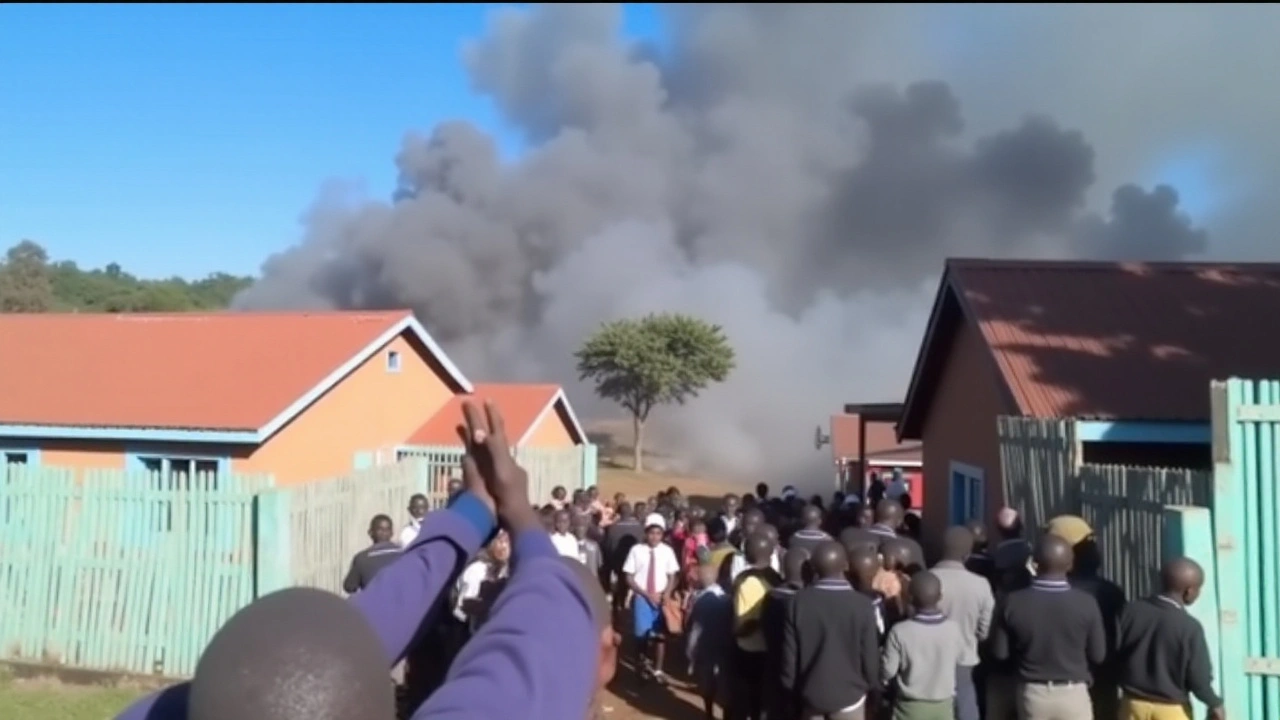School Fires: What Triggers Them and How to Keep Schools Safe
If you walk into a school hallway and smell something burnt, your gut will tell you something's wrong. Fires in schools can spread fast, disrupt learning, and even put lives at risk. Understanding the most common causes helps teachers, parents, and administrators act before a spark turns into a disaster.
Why Do School Fires Happen?
Most school fires start because of simple mistakes. Overloaded power strips, faulty wiring, or a forgotten candle in a classroom can ignite in minutes. Labs are another hotspot – chemicals mixed without proper ventilation often produce heat or fumes that lead to fire. Even careless students playing with matches or lighters add to the risk.
Another big factor is the building’s age. Older schools may have outdated fire‑safety systems, missing smoke detectors or blocked exits. When a fire does break out, those obstacles slow evacuation and make it harder for firefighters to get in.
Practical Steps to Prevent Fires
First, check electrical equipment regularly. Replace frayed cords, avoid chaining too many devices on one outlet, and keep extension cords out of high‑traffic areas. Second, store flammable materials—like cleaning chemicals or lab reagents—in locked cabinets away from heat sources.
Third, train staff and students on fire drills. A drill isn’t just a walk‑through; it should include clear roles for teachers, a designated meeting point, and a quick headcount. When everyone knows what to do, panic drops dramatically.
Finally, keep the building up to code. Install smoke alarms in every classroom, test them monthly, and make sure fire extinguishers are visible and serviced yearly. If your school has a maintenance budget, prioritize upgrading old wiring and adding sprinkler systems where possible.
Recent School Fire Cases and Lessons Learned
Last year a high‑school science lab in Nairobi caught fire after a student mixed two chemicals without supervision. The fire was contained quickly because the lab had an automatic suppression system, but classes were canceled for two days. The incident reminded schools to enforce strict lab safety protocols and keep emergency equipment accessible.
In another case, a primary school in Lagos experienced a small blaze caused by an electrical fault in the staff room. Teachers evacuated students within three minutes, thanks to regular drill practice. The fire department praised the swift response but noted that outdated wiring contributed to the problem.
These stories show that while accidents can happen anywhere, preparation makes all the difference. Schools that invest in simple measures—like routine equipment checks and clear evacuation routes—often avoid bigger damage.
Bottom line: fire safety isn’t a one‑time task; it’s an ongoing habit. Encourage open communication about hazards, keep safety gear up to date, and rehearse drills often. When the whole school community stays alert, the chances of a fire turning into a tragedy drop dramatically.

Infernos Hit Schools in Busia and West Pokot, Raising Concerns on Student Safety
Sep 10, 2024 / 13 Comments
Two fires broke out at Bukhalalire Secondary School in Busia County and Ortum Boys in West Pokot County, causing significant property damage. These incidents are part of a worrying trend of school fires in Kenya, with authorities suspecting arson. No injuries were reported, although the exact cause remains under investigation.
READ MORERECENT POSTS
- Ambassador Linda Thomas-Greenfield Highlights Juneteenth's Importance
- BRICS Nations Committed to Stability of US Dollar Despite Potential Tariff Threats
- Socceroos Face Off Against Saudi Arabia in Spirited Nil-Nil Clash
- Manchester United Pursue Signing of Arsenal's Prodigy Chido Obi-Martin: Future Soccer Star in the Making
- Messi Draws Massive Crowd but Goes Goalless as Inter Miami and Chicago Fire Set New MLS Attendance Record
